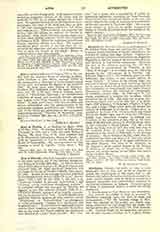www.catholic.com/encyclopedia/atto-of-pistoia


Click to enlarge
Atto of Pistoia, b. at Badajoz in Spain, 1070; d. May 22, 1155. He became Abbot of Vallombrosa (Tuscany) in 1105, and in 1135 was made Bishop of Pistoia. He wrote lives of St. John Gualbert and of St. Bernard of Vallombrosa, Bishop of Parma. In 1145 he transferred to Pistoia certain relics of St. James of Compostella. His correspondence on that occasion is found in Ughelli, “Italia Sacra”, VII, 296.
THOMAS J. SHEEHAN
Enjoying this content? Please support our mission!Donatewww.catholic.com/support-us

